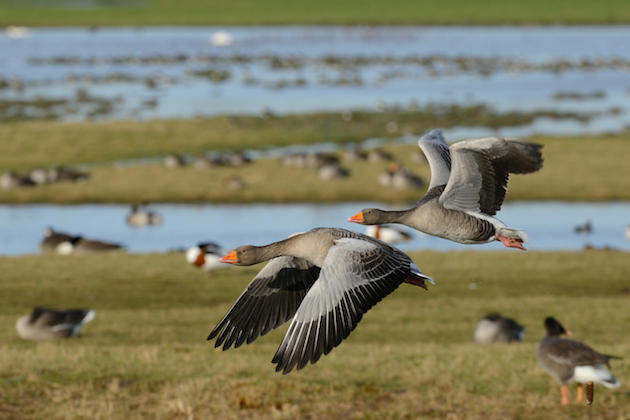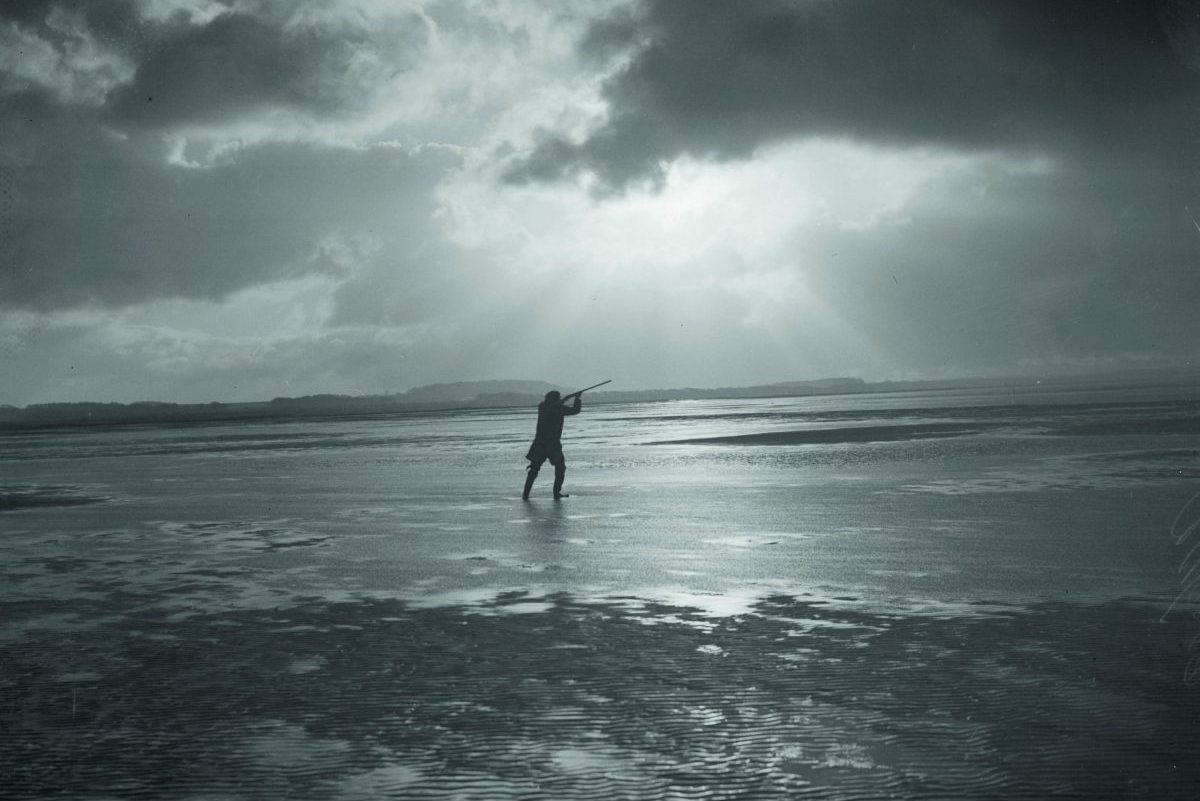Ducks and geese – not such a fine romance
Ducks pair for a season but geese will mate for life - and it's pure convenience, says Mike Swan

Greylag geese will pair for life, unless one of them is killed
Have you noticed how often ducks coming to a flight pond come in twos, especially later in the season? It’s no accident — by this time of year the breeding pairs have mostly formed.
If you are a sentimental old fool like me, you could be distressed about this, and worry that you are likely to leave a bird without a mate, but it does not quite work like this.
What actually happens, with pretty much every species of duck, is that they form a pair bond each year for breeding, but that this breaks down afterwards.
Since most members of most species also migrate, often to Arctic or near-Arctic breeding grounds, they have a short summer in which to find a nest site, lay a dozen or so eggs, incubate, and then rear a brood.
In the case of a mallard, for example, it would need two weeks to complete a clutch, four to incubate, and around eight for the young to fledge.
Add on a couple of weeks to get reasonably strong on the wing ready for migration, and you end up with a four-month breeding season, so turning up already paired and raring to go is a distinct advantage.

It is no coincidence that you often see mallard in pairs on a flightpond
Absent fathers
Once the clutch is laid, dad loses interest and leaves mum to do the work, while he hangs out with the lads until moulting and migration time. Meantime, he will happily shatter all your dreams about being part of an ever faithful pair by forcing himself on any unattached duck that happens into view.
In areas where the birds congregate in higher numbers, such as town parks where the free food from people keeps them concentrated, this can result in very poor productivity, as ducks that are off the nest for a quick feed get harassed so much the eggs can chill.
Even when they have broods in tow, ducks are often persistently pestered by randy drakes, with ducklings dying of starvation, chilling or predation as a result of lack of maternal care.
With the young reared, the birds then flock up ready for migration, arriving on the wintering grounds with no specific attachment to any other bird. Then, any time from about November, once they are back into full plumage, they will start to show off and pair up, read for next spring.

When you add a duck to the bag, you need not fear you are condemning its mate to a life of loneliness
Any birds that lose their partner will try to find another, both through the winter and even after arrival on the breeding grounds, so few if any of the ladies will be without a mate. This is because there is almost always a slight preponderance of drakes, since they are less vulnerable to predation in summer, while their ladies are on the nest.
If a pair end up together again for the next season this is most likely to be sheer chance, and not because there is any lingering bond from the previous breeding season.
There are odd exceptions to this. Some species that nest in holes in trees, like goldeneye, have a very strong philopatry, both breeding and wintering in the same places year on year. This means that pairs often meet up again on the wintering grounds and return to the same lake as the previous year to breed.

In most geese species, both parents share care of the goslings, later forming bigger family groups
Geese
Geese are rather different and geese mate for life, as do swans. If you look carefully next time you visit a town park in summer, you will notice that while the ducklings are following mum alone, goslings are looked after by both members of the pair.
Just like the ducks, they will form up into post-breeding gaggles composed of many families. They then move around or migrate in skeins, according to the norm for the species.
If you watch a gaggle in winter on the feeding grounds you will gradually manage to work out the family groups. They may be part of a bigger group, but they still stick together within this. It is not really until late winter that pairing of younger birds takes place, and this normally only applies to second year birds. From this age onwards pairs will normally stay together for life, but those that lose their mate will seek a new partner.
When the pair gets back to the breeding grounds, they will settle to breed quite quickly, and in the case of adult pairs will normally end up nesting at the same site as previous years. There are no elaborate displays like those of pairing ducks, but they will often march side by side with necks outstretched, honking their calls. This ‘triumph ceremony’, as it is called, is a clearly a part of cementing the bond and happens when they first arrive back, as well as being used when the gander has seen off some threat to the safety of the family.
Birds that lose their mate on spring migration, or worse still once back on the breeding ground, will rarely find a new mate until the following winter. Meanwhile, first-year birds that are not yet of breeding age will hang around in small gaggles while their elders hatch and rear the next batch of young, before everyone gets back together ready to head off to the wintering grounds.
Knowing about lifetime pairing in geese you could easily begin to feel guilty about shooting them, but really it is just a practical way to succeed for relatively long-lived birds, most of whom have no time to waste during a short Arctic breeding season.
Likewise for ducks, the short-term pair bond is a good way to be ready to breed quickly. The fact that the drake leaves once incubation starts is perhaps also helpful, in that he will not be competing with his mate and offspring for what may be limited food available in the breeding pond.
So let’s not get too anthropomorphic about this — these birds pair for sound ecological reasons, not because they are in love.








